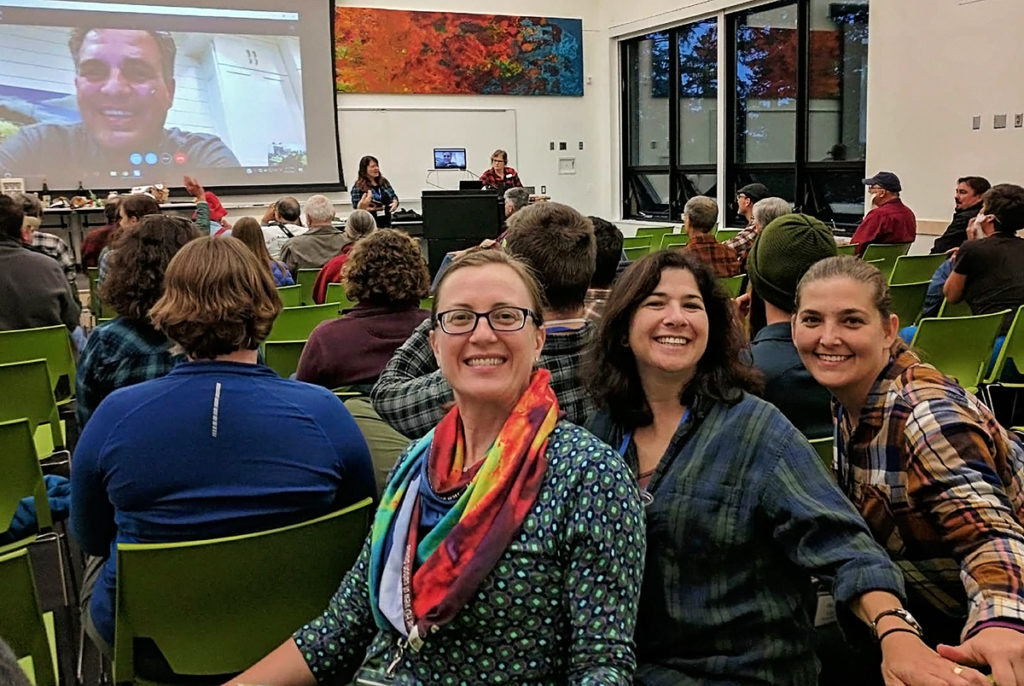A large majority of the U.S. population lives within 60 miles of a natural site where scientists are conducting research – and most of these sites offer a science education outreach component for the public.
Jill Zarestky, an assistant professor in Colorado State University’s School of Education, along with Assistant Professors Rhonda Struminger and Michelle Lawing of Texas A&M University, has received a grant from the National Science Foundation to study informal STEM learning at these sites, known as biological field stations.
The Exploratory Pathways project seeks to understand and evaluate field stations as centers of informal STEM learning for the non-science community. Zarestky and her partners will study how scientists and STEM curriculum experts at some 400 biological field stations located in the United States connect with and engage learners through outreach programs.


Their findings will be used to aid field stations in preparing new informal education options and improve current offerings, as well as help stations collaborate with each other to strengthen and grow their STEM learning activities.
“We hope our research will help the public and the informal learning community understand what a field station is and what happens at these exciting research centers,” said Struminger.
Field stations and what they offer
Field stations are facilities at scientifically interesting locations where biologists, ecologists, and other researchers study nature and the environment. There are more than 400 field stations in the U.S.; examples local to CSU include the CSU Mountain Campus and the Rocky Mountain Biological Laboratory near Crested Butte.
In addition to supporting scientists and university students, most field stations engage in outreach by providing opportunities for members of the local community to engage with and learn about nature and science. Outreach varies widely based on field station resources, but examples include citizen science projects, where non-scientists collect data in support of research projects, field trips and summer camps for school children, and nature walks or lectures on topics related to the station’s location or unique qualities. Through these activities, field stations help the public learn to answer questions such as the age of a forest or the types of animals that live in the area.
Studying learner engagement
“Seventy-eight percent of the U.S. population lives within 60 miles of a field station; 98 percent lives within 120 miles of a field station,” said Zarestky. “A benefit to advancing informal STEM learning by investigating field stations is the broad range of people and communities that are involved with and affected by field station outreach activities. This creates a great opportunity for the research team to study and ultimately improve the ways field stations connect people to science, nature, and the environment through education.”
From their preliminary survey, Zarestky and team found that 22 of the 25 participating field stations offer some sort of outreach programming, and all were interested in expanding their learning opportunities for the public. More than 80 percent of those surveyed employ a full-time outreach coordinator.
Through their research, Zarestky and team will document the outreach activities of U.S. field stations, and explore the connections among how these activities engage learners, incorporate STEM topics, and address science learning.

The team will create a multidimensional framework around the activities as a way to provide a resource and reference database that informal STEM practitioners and researchers can use to understand what informal learning projects take place at field stations and how these activities fit into the broader context of informal STEM learning.
“As an educator,” said Zarestky, “I’m excited about working with field stations because of the great opportunities for learners of all ages to become more engaged with science and nature.”
The study began in August and is scheduled to run through July 2019.
The School of Education is part of CSU’s College of Health and Human Sciences.